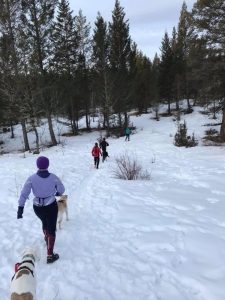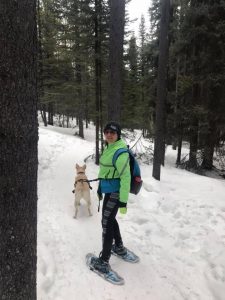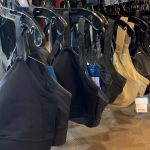Winter Running
Winter running doesn’t have to suck. A lot of people ask me if I run in the winter. I do, and I enjoy winter running more than any time of the year truth be told. I’ve run in -15C training for the Grizzly Ultra. I’ve run in -10C for a half marathon. My friend Nikki and I ran a 5k in some ridiculous February deep freeze temperature because we were just tired of being inside.
Winter season 2020-2021 is one we will all have to figure out how to be outside more.
Dress in Layers
 The key for winter running is to dress in layers :
The key for winter running is to dress in layers :
1. Base Layer
When choosing your base layer, make sure its in a technical fabric because it will wick moisture away from the body to keep you warm. I like a long sleeve base layer.
2. Mid-layer
This layer is a little more insulating and can vary in how thick you want it to be depending on the temperature. My mid-layer that I use most is my Icebreaker sweater. I like the high neck and long sleeves.
3. Insulation layer
You want a jacket that fits all your base and mid layers, and you can still move freely in. I use either my cross country ski jacket or my highlighter green running windbreaker.
4. Pants
Running tights that are fleece lined which keep your legs warm and still allow movement is what you want to look for.
5. Head and hands
A light toque for your head, technical fabric again, or just a buff or headband that covers your ears. Some light mitts, or gloves that have the over-mitt. Find the style of toque, headband, glove or mitt that works for you.
6. Feet
People ask about winter running socks, I just use ski socks since my feet are always cold. First, they are generally over the calf for added warmth. Good quality ski socks are made of technical fabric, or more popularly, Merino wool. Once again, avoid using cotton socks.

Winter Running Shoes
Winter running shoes are always a challenge. I have specific pairs for winter running:
- For road running I have a pair of Saucony’s Ice that has a specific winter running sole to help maintain traction and are waterproof.
- For trails that have ice lurking underneath, I use my Icebugs with the built in studs as you need the more aggressive traction for going up and down the steeper hills you find on trails.
You can get the same type of traction using Kahtoola’s Nanospike or the Exospikes. For those that want to dedicate a pair of shoes for winter running, you can add IceSpikes which are studs that screw directly into the sole of the shoe.
Sorting out the Best Combination
It takes a bit to sort out the best combination of layers, socks, mitts and shoes. You want to start your run a bit on the chilly side, as you will warm up as you go.
It takes me a few weeks at the start of winter to figure out the best combination for the weather. I add or subtract layers depending on how cold it gets.
How cold is too cold?
Everyone has a personal limit on how cold they will run in. The colder it gets, the shorter your run should be (hence the 5k in the deep freeze in February we did for sanity). Decide on your own personal temperature limit and stick to it.
Since my Grandmother was of Norwegian decent, I end with a popular saying that sums up how to deal with winter and being outside:
“Det finnes ikke dårlig vær, bare dårlig klær!”
which translates to “There is no bad weather, only bad clothes!”





